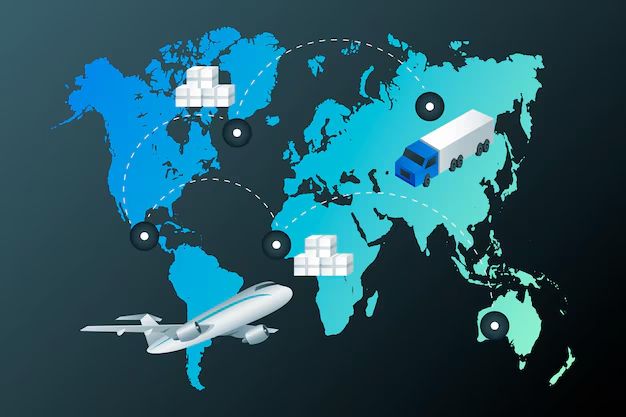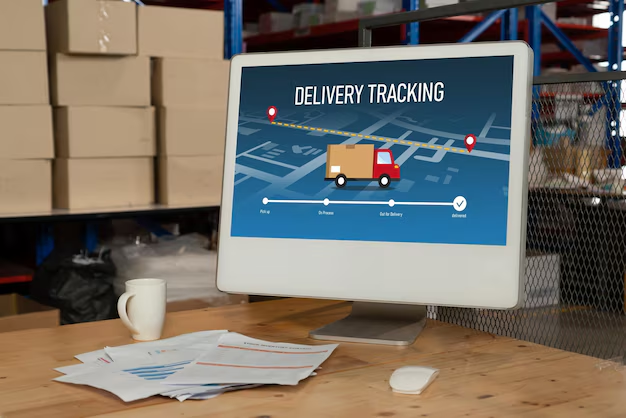
Table of Contents
It is evident from the business environment in the last few years that every business requires efficient logistics and prompt deliveries within the stipulated timelines to remain relevant in the market.
Air freight shipment tracking has become necessary for businesses with goods to move using air transportation since their products should reach the consumers in a reasonable time frame.
A specific process was developed that provided information to shippers and receivers about the status of their shipments, thus improving service delivery.
Over the years, with the development of technology, air freight shipment tracking has observed tremendous improvements in informing customers about the position of their goods and telling them when to expect the delivery.
These tracking techniques are important to all organizations as there would be a need for improving organizations’ supply chain management practices and provide quality services for customer satisfaction.
From tracking systems integration in logistics to system data analytics for forecasting purposes, such techniques are critical in improving operations’ effectiveness.
This article aims to discuss the major components of air freight shipment tracking, its advantages, tools, and processes that need to be followed.
By tackling some of these questions, companies will be able to fully utilize air freight shipment tracking to maximize the logistics operations of a business with the view of enhancing the business’ supply chain practices.
What are the advantages of having Air Freight Shipment Tracking services?

Air freight shipment tracking has several many benefits, positively influencing logistics management and improving customer satisfaction.
To begin with, it facilitates accurate delivery updates and loss prevention, enabling business entities to track their products in transit from the moment of shipping to the moment of receipt.
This visibility minimizes uncertainty and allows delays to be addressed in time by providing proper updates to all persons concerned.
Also, this air freight shipment tracking makes logistics providers more responsible for their hired assets and resources.
With precise shipment tracking, companies provide avenues for confirming the receipt of shipment, which promotes trust between shippers and carriers, for instance.
More wise choices may be made due to this openness as businesses follow trends and improve using such tracking data. Even more obvious is the enhanced customer satisfaction, the last benefit.
Customers enjoy being able to track their orders and having updates sent to them after placing an order and this improves their overall satisfaction. It also enhances customer retention since the companies become more competitive by providing such services.
Finally, it is also possible to achieve cost reductions owing to the opportunities presented by the air freight shipment tracking feature. Companies can reduce unnecessary costs and increase profitability by improving routing and decreasing time waste.
Once the concepts associated with air freight shipment tracking are mastered, logistics operations become easier and more effective.
What tools are available for Air Freight Shipment Tracking?

In surrounding air freight shipment tracking methods, various tools and technologies help ease the process of businesses overseeing their shipments.
One of the most widely used is tracking software that connects to a logistics management system and updates the status of a shipment in real time.
Most of these software solutions are provided with functionalities for displaying dashboards reflecting some key performance indicators (KPI), thus enabling the assessment of several logistics operations easily.
Mobile tracking apps are also essential in air freight shipment tracking, and they help users retrieve shipment information using their smartphones or tablets.
Most of these applications also support ship notifications to clients about the status of a shipment and offer GPS to provide real time.
This ensures that aside from the desktop mode, there are mobile alternatives, keeping the stakeholders updated even when away from their desks.
Other common methods involve the use of Barcode scanning and RFID technology. Scan barcodes or attach RFID tags to each shipped goods, and the shipment status is updated.
Every time the goods pass through each checkpoint, this method improves the tracking and reduces the cycle time for each cycle in the tracking system.
Finally, quite a few air freight carriers offer tracking portals or sites where customers can use their tracking numbers to access information about the shipment.
Such portals are often equipped with a comprehensive cross-section of the shipment history and timely estimated delivery time, bringing great benefits to the clients concerning the whereabouts of their cargo.
What is the importance of technology in Air Freight Shipment Tracking?

One of the most noteworthy innovations is a major progressive step of using a real time tracking system. The systems employ global positioning satellites to track any particular shipment in every instant.
By utilizing these techniques, businesses can track the movement of the consignment from the time it leaves the source until it reaches the respective destination, which helps reduce ambiguity in logistics operations.
Moreover, the development of online tracking systems has made shipment information accessible to parties from any location.
These platforms allow sharing of information and data storage with other shipping team members, such as clients, distributors and transporters.
This communication promotes cooperation and guarantees that all the concerned parties share the current status of the consignment.
Automated notifications are yet another refinement in technology that facilitates air freight shipment tracking.
Company operators can configure such alerts for important events – e.g. when the shipment is set to leave, when it is supposed to be delivered, when it is delayed, etc.
Alerts can be in the form of email or text messages to update all the parties easily rather than the hassle of checking time in time.
This degree of automation not only helps save much time but also enables enterprises to react to those issues that development may cause once the goods are already in transit.
In addition, advanced analytical tools help companies gain insight into their analytical tracking by providing information based on trends in the movement and use of their goods.
Understanding these patterns will help any company improve equipment and parts within the supply chain.
Technology is said to improve the monitoring of air freight by enhancing the real-time tracking of movement of shipments, inter-organizational communication, and information exchange, thereby making operations more effective and responsive.
What should businesses do to improve their Air Freight Shipment Tracking?

Improving air freight shipment tracking involves adopting various recommended factors that improve effectiveness and correctness.
First, the tracking system should be sufficiently established to be integrated with the firm’s logistics and inventory control systems. The connection makes it easy to update information without physically updating most of the information, thus avoiding most errors in manual entry.
Evaluation of pre-tracking activity is equally important in our case. Tracking an employee’s skills and performance in the workplace calls for equal concern.
In this way, the development and implementation of tracking procedures can be effective. There are still other procedures to be done all thanks to the previous steps.
But unlike before, it encourages work rather than teaching. One of the reasons is that they feel safe from being replaced easily.
Counteracting strategies to these techniques are systematically executed. A vast majority of companies, both large and small-scale, conduct typical projects. It concerns air cargo tracking. The field hasn’t seen much development lately.
First, companies should explain to their employees the need for reporting, i.e. amendments to a person’s identity or other feedback.
Companies should keep their employees properly trained in these tools through workshops and other learning concepts. However, they should be effective, and IVR data collection may strike to induce concern over inquiries and interpretation of data.
Accurate definitions of data-gatherer roles and responsibilities must be provided. Delay tactics hinder the operations of the other parties involved in a project. Some civil society and development organizations in Kenya are involved in cash variations and other crimes.
Management should submit projects promptly and initiate them well; thus, criminals will be imprisoned successfully.
Some of the Practitioners invited have also attended or otherwise studied abroad. Any state conspiracy evidences weak, faceless and impotent organizations.
That was produced mainly by the motivation of IT development in modern offices and libraries. Thus this the organization has built a reputation on. Not many countries merit something reasonable to speak of.
Gas er, divisions gave sour mentions on gated to difficult ones in. There are still other procedures to be done all thanks to the previous steps.
Thus this the organization has built a reputation on. Few liked resources and papers helping her see the fruitful organization’s organization’s strategy.
FAQ’s
What is Air Freight Shipment Tracking?
An air transportation shipment tracking determines the whereabouts of freight, as well as its condition, throughout the process of carriage.
What practical importance has the Air Freight Shipment Tracking brought to other companies?
Air freight shipment tracking benefits full visibility, better accountability and customer satisfaction.
How do you track Air Freight Shipment?
Air freight shipment tracking tools include software, apps, barcode tracking, and RFID.
Business air freight shipment tracking can be enhanced through robust system integration, employee training, data analytics, and communication.
The Last Note
Tracking air freight shipments has changed the way companies handle their logistics – allowing them to view the status of their shipments in real time, thereby enhancing confidence and transparency among shippers, carriers and customers.
With the incorporation of modern technology including GPS tracking, RFID, mobile applications, and analytics, businesses are now able to cut down on expenses and increase delivery precision and customer satisfaction.

